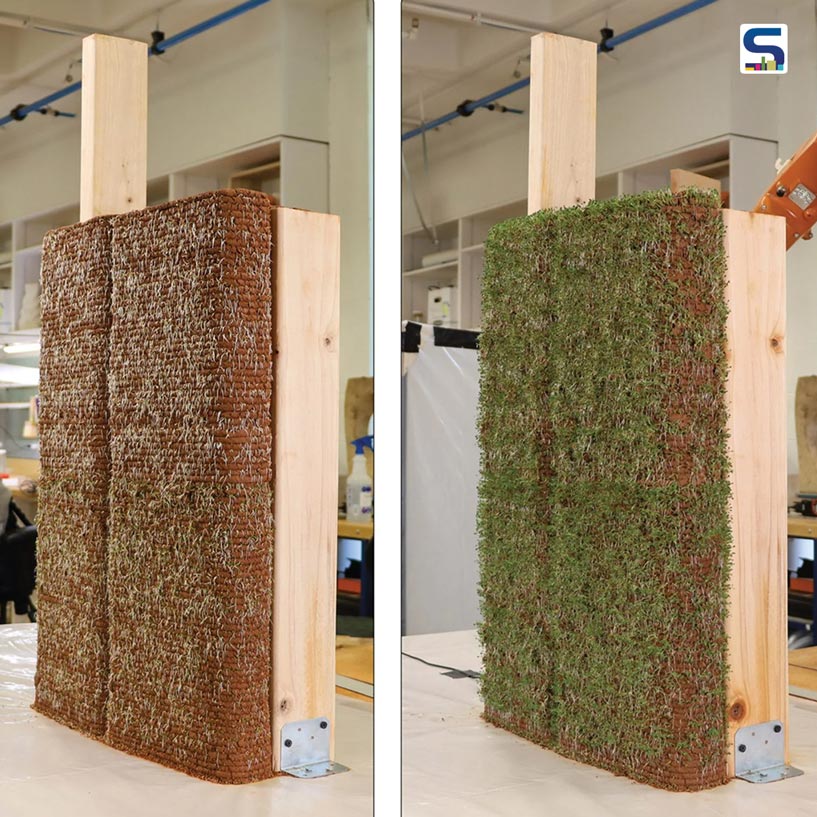
Researchers at the University of Virginia have invented a unique and sustainable method of 3d printing objects created from soil impregnated with seeds. This will help to craft walls and roofs that can sprout green plants. The prototypes were initially looking like normal raw-earth structures but in a few days, they germinate and become covered with plants, leading the research team to compare them to "oversized Chia Pets". Read the complete report below at SURFACES REPORTER (SR):
Also Read: 3D Printed “Arabesque Wall” with 200 Million Individual Surfaces
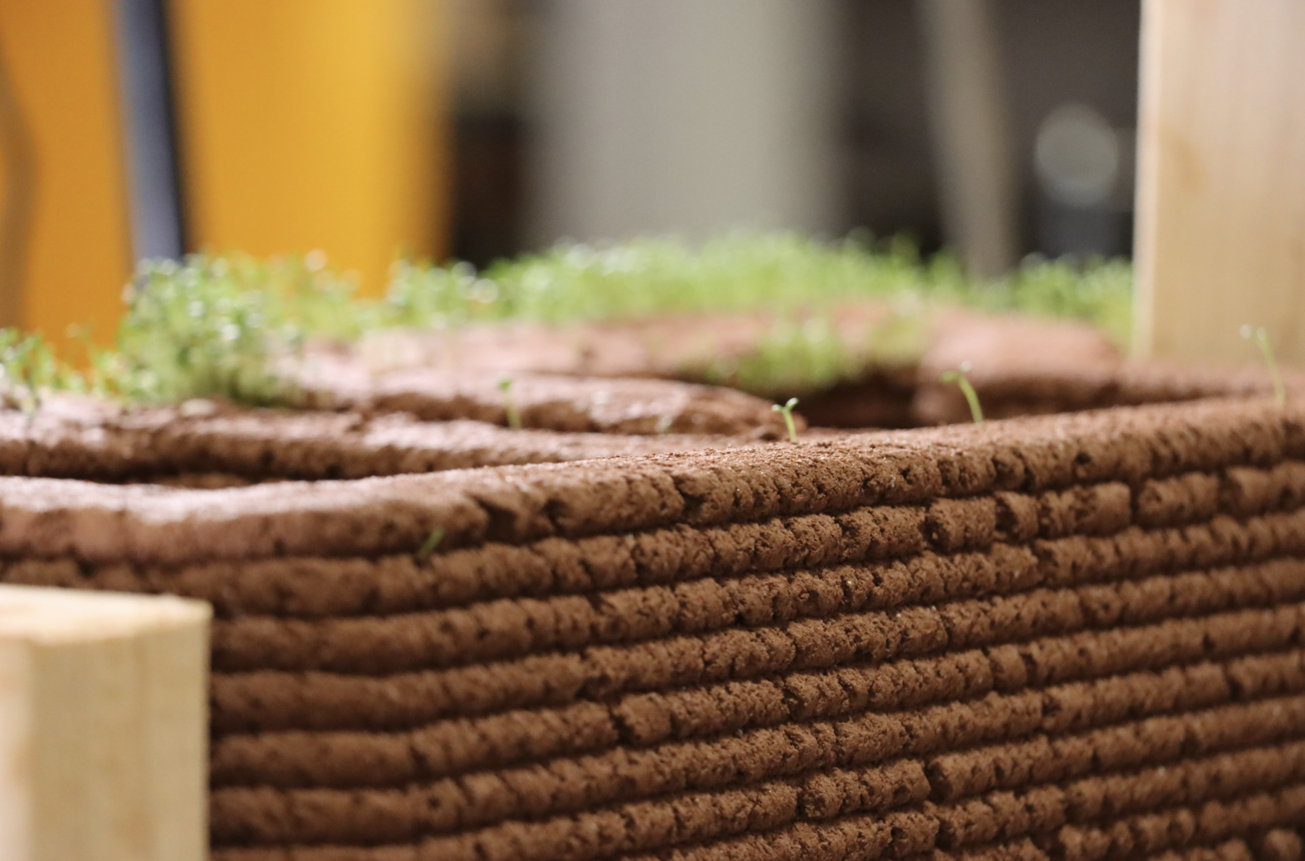 Ji Ma, an assistant professor of materials science and engineering at the University of Virginia, Ehsan Baharlou, an assistant professor in the UVA School of Architecture; David Carr, a research professor in the university’s Department of Environmental Sciences; and a recent UVA graduate Spencer Barnes who pursued his bachelors in aerospace engineering created prototypes that seem as plain soil structures but over a course completely covered by plant life.
Ji Ma, an assistant professor of materials science and engineering at the University of Virginia, Ehsan Baharlou, an assistant professor in the UVA School of Architecture; David Carr, a research professor in the university’s Department of Environmental Sciences; and a recent UVA graduate Spencer Barnes who pursued his bachelors in aerospace engineering created prototypes that seem as plain soil structures but over a course completely covered by plant life.
What are the benefits?
Creating building structures such as roofs and green walls using this technique offers natural insulation, prevents flood and provides green spaces for people, pollinators and other creatures.
According to the team, by merging soil and seeds into 3D-printable “soil inks”, plants can be built into the very fabric of architectural features rather than just layering it on the surface.
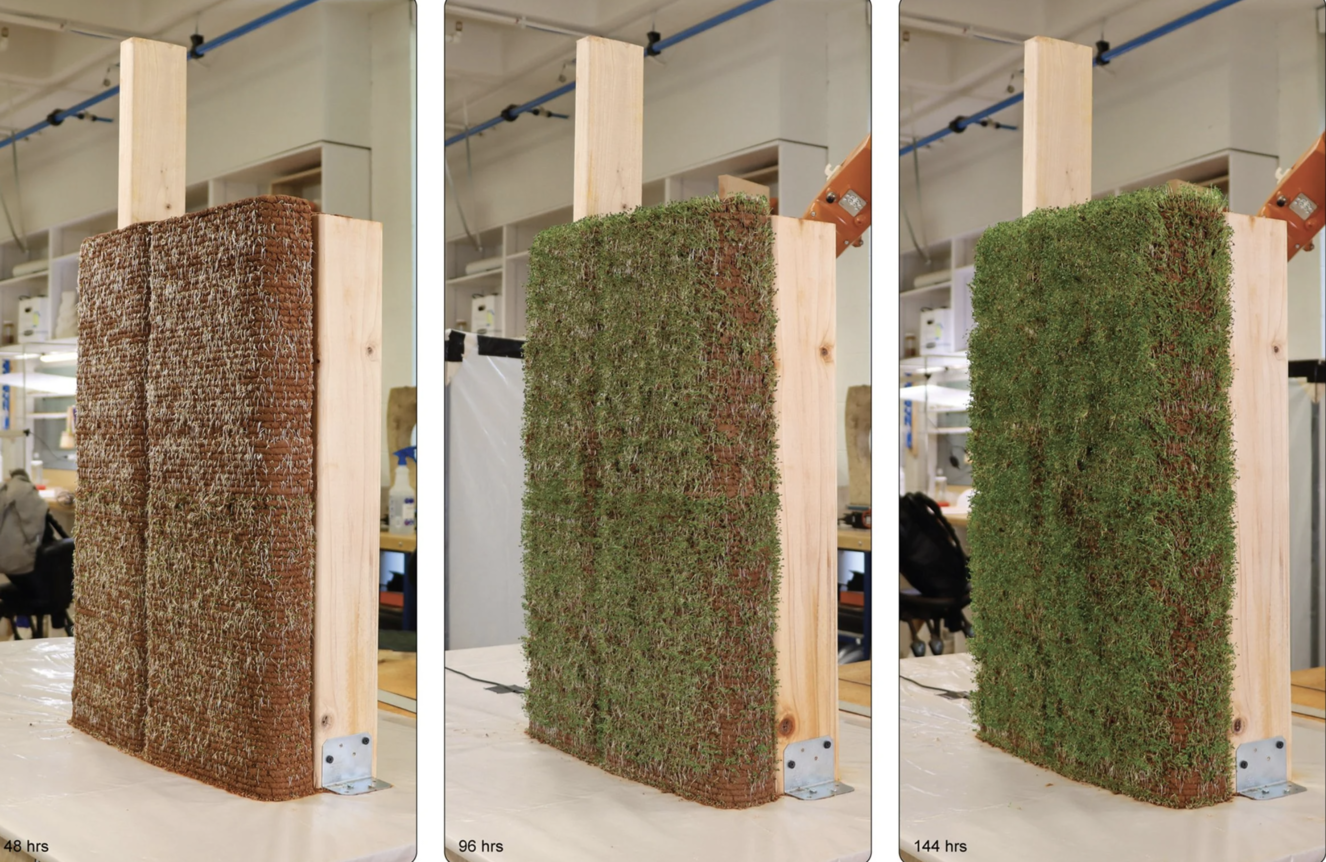 Changes occurred in small soil wall after 48 hours, 96 hours and 144 hours
Changes occurred in small soil wall after 48 hours, 96 hours and 144 hours
By combining soil and seeds into 3D-printable "soil inks", greenery could be built into the very fabric of architectural features rather than just layered on top.
This process helps to lower the need for more carbon-emitting building materials and substitutes them with a sustainable alternative that can be recycled or reused.
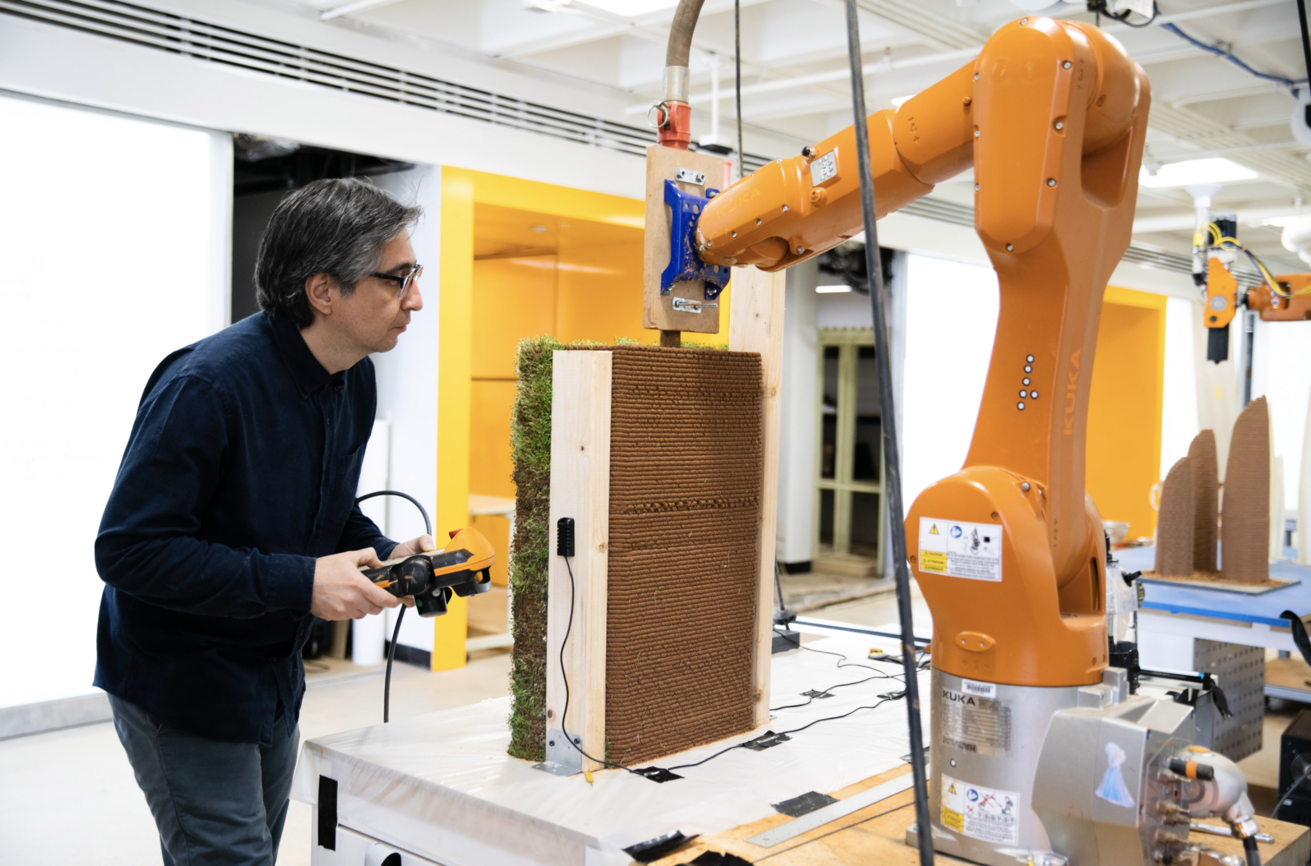 Ehsan said, “ we are currently working with local soils and plants mixed with water. The only electricity we need is to move the material and run a pump during printing."
Ehsan said, “ we are currently working with local soils and plants mixed with water. The only electricity we need is to move the material and run a pump during printing."
In case they did not need a printed piece or it is not in the right proportion or quality, it can be recycled or reused in the next batch of inks.
Also Read: First 3D-Printed Building in India, Made Using Local Building Materials
A Carbon Negative Solution
The building made from this method will be carbon neutral or even carbon negative as the plant-covering of it would help to capture the health hazardous carbon dioxide from the air. These 3D-printed soil structures capture carbon in the atmosphere through the process of photosynthesis and expel clean air.
Initially, scientists created cylindrical prototypes and then they worked on more complex structures such as domes. They also created low-height walls which are about a meter long.
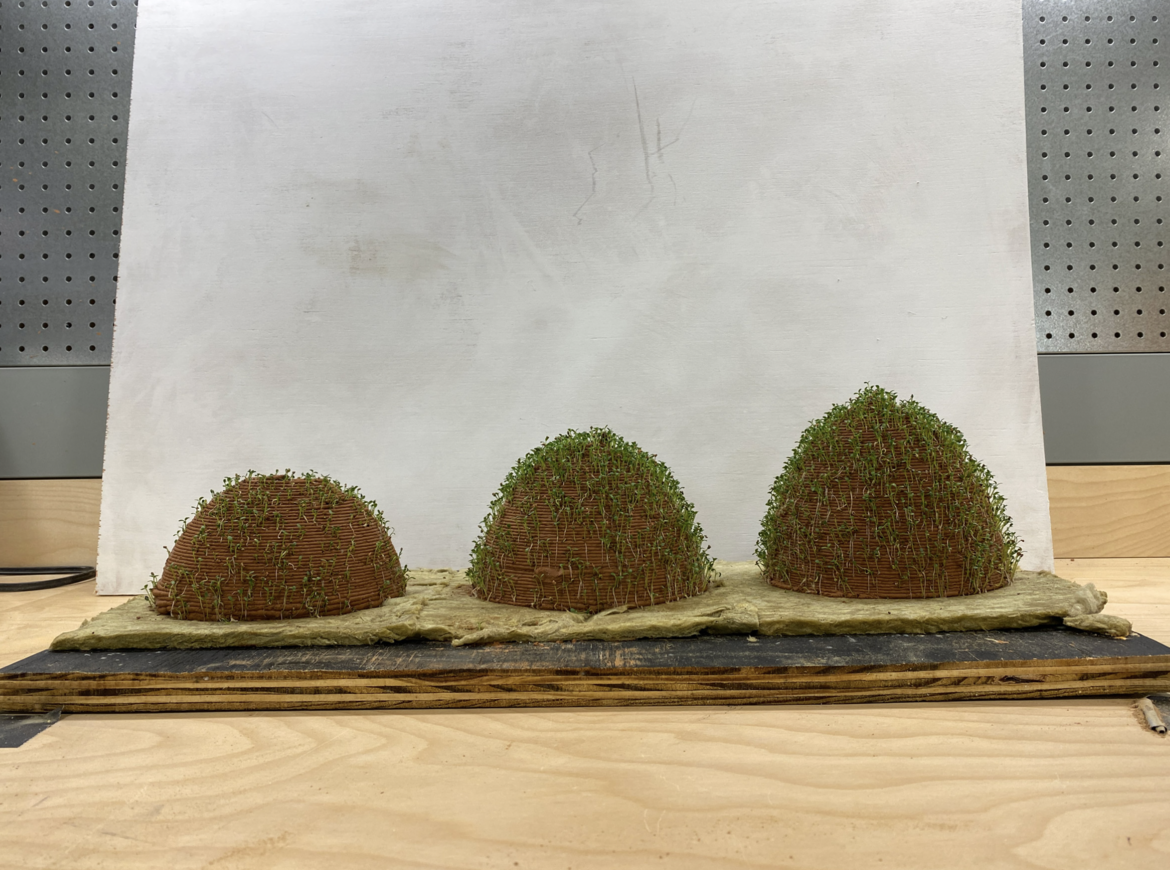
The developing team also formed a series of small, self-supporting structures resembling beehives and got them published in the journal Additive Manufacturing. Shaping sturdy print structures with multiple sides is the next goal of the researchers. The plan is to create structures that are solid enough to stand without any support while providing enough nutrients and moisture to allow proper seed sprouting and growth.
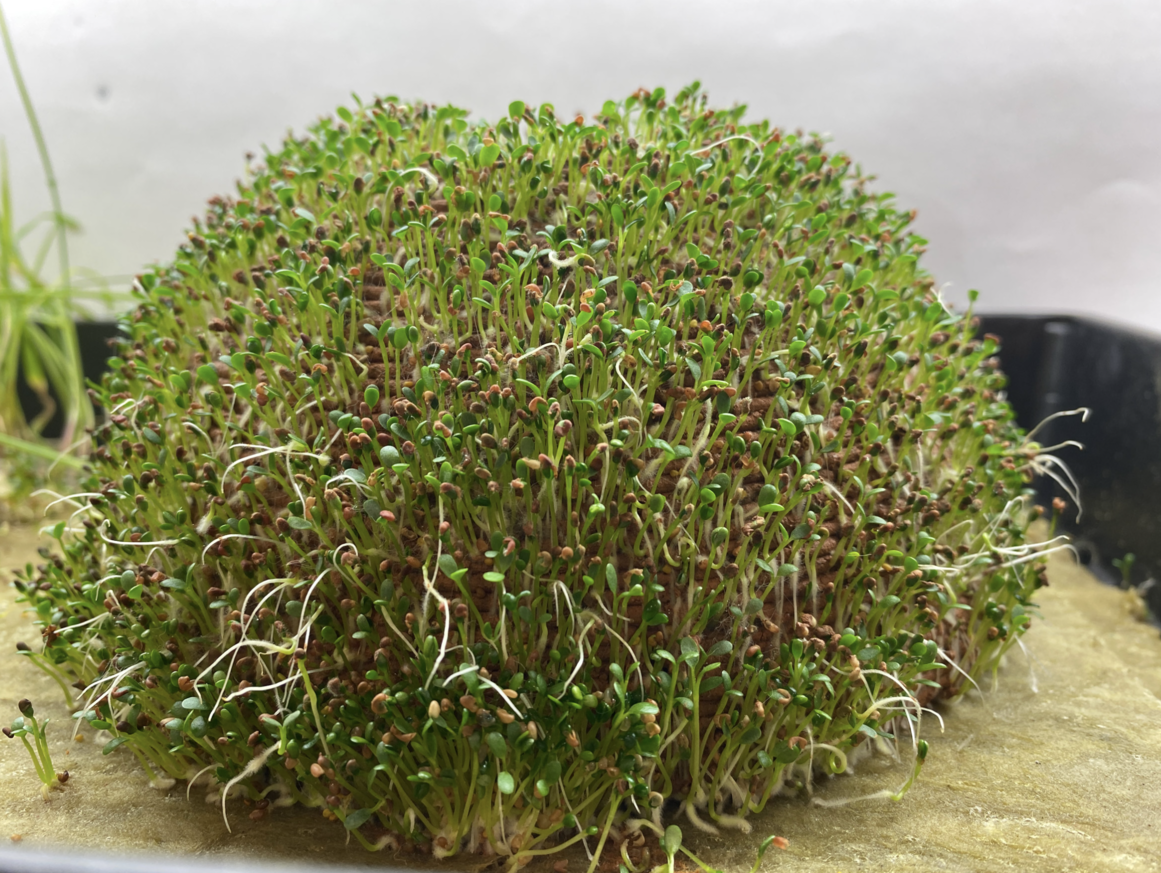 Next, the researchers will explore mounting a 3D-printing system on a moving robot that could allow the formation of larger, more complicated structures with multiple sides. Further, they are planning to experiment with using different material layers within a wall panel that will enable the dry inner wall to get insulated from the damp or moist outer wall.
Next, the researchers will explore mounting a 3D-printing system on a moving robot that could allow the formation of larger, more complicated structures with multiple sides. Further, they are planning to experiment with using different material layers within a wall panel that will enable the dry inner wall to get insulated from the damp or moist outer wall.
Apart from the researchers at the University of Virginia, earlier London-based Blast Studio had also created living architecture using 3D printing. They combined mycelium with paper pulp to produce an architectural column that can germinate mushrooms.
Project Credits
Research team: Ji Ma, David Carr, Ehsan Baharlou, Spencer Barnes, Leah Kirssin and Lizzie Needham.
Images Courtesy: Ehsan Baharlou
Keep reading SURFACES REPORTER for more such articles and stories.
Join us in SOCIAL MEDIA to stay updated
SR FACEBOOK | SR LINKEDIN | SR INSTAGRAM | SR YOUTUBE
Further, Subscribe to our magazine | Sign Up for the FREE Surfaces Reporter Magazine Newsletter
You may also like to read about:
The First 3D Printed House ‘Gaia’ Built With Soil, Rice Husks, and Straws
Researchers 3D Print Soil to Create Walls, Roofs Teemed with Plants
And more…